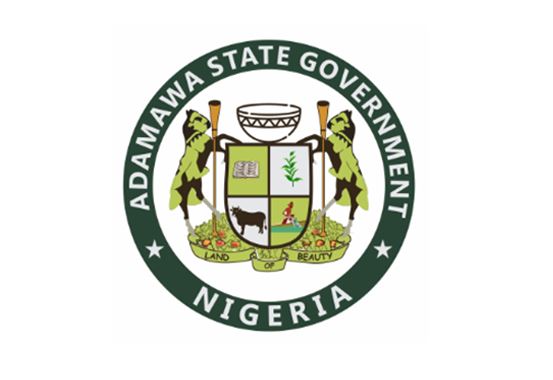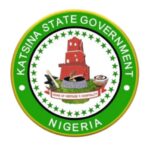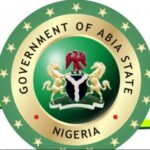This guide comprehensively lists all the Local Government Areas in Adamawa state along with their chairman. Adamawa State is in northeastern Nigeria, sharing borders with Borno, Gombe, and Taraba States, and Cameroon to the east.
Its capital, Yola, is also the historic center of the Adamawa Emirate, founded by Modibo Adama during the Fulani Jihad.
Established in 1991, Adamawa was formed out of Gongola State and is known for its ethnic groups, culture, and natural beauty.
The state covers 36,917 square kilometers, featuring highlands, the Adamawa Plateau, and major rivers like the Benue and Gongola.
Adamawa’s economy is largely agrarian, focusing on crops like maize, rice, and cassava, as well as cattle rearing and fishing.
READ ALSO: Complete List Of Katsina State Local Government Area And Its Chairmen
Complete List Of Local Government Areas In Adamawa State And Their Chairmen
Adamawa State has 21 Local Government Areas (LGAs), each administered by a chairman. Here’s a list of all the 21 local government areas in Adamawa and their chairman:
- Demsa – Akham Jaloh
- Fufore – Shuaibu Babas
- Ganye – Farouk Mohammed
- Girei – Adamu Umaru Dala
- Gombi – Mark Ishaya
- Guyuk – Barr. Kassah D. Shalom
- Hong – Inuwa Usman
- Jada – Salihu Mahmud Sa’o
- Lamurde – Bulus Daniel
- Madagali – Simon Musa Shashi
- Maiha – Abubakar Mustapha
- Mayo-Belwa – Umar Nashong
- Michika – Dan Biyu Paul Tumba
- Mubi North – Musa Hassan
- Mubi South – Hamidu A Jingi
- Numan – Innocent Koto
- Shelleng – Abubakar Musa Abba
- Song – Idris Yahaya
- Toungo – Sulaiman Gangkuba
- Yola North – Jibril Ibrahim
- Yola South – Salihu Usman Malkohi
READ ALSO: Complete List Of Local Government Areas In Imo State And Their Chairmen
What Is The Largest LGA In Adamawa By Land Mass?
The largest Local Government Area (LGA) in Adamawa State by land mass is Toungo. It covers a vast area of 5,665.37 square kilometers, making it the largest LGA in the state.
Out of this, 1,022.37 square kilometers consist of plains, and around 30.07 square kilometers are marshlands. Toungo’s land features include rugged highlands, which serve as a natural boundary with Cameroon to the east.
Toungo has a tropical savanna climate, with clear wet and dry seasons. The wet season lasts from April to October and brings significant rainfall.
This weather supports farming, which is the main economic activity in the area. Residents grow crops such as maize, millet, and groundnuts.
Livestock farming is also common, helping families maintain food security and economic stability. As of the 2006 population census, Toungo had 52,179 people.
In 2025, estimates suggested the population had grown to about 85,800. The area has a youthful population, with many residents under the age of 15.
This presents both opportunities for growth and challenges, such as the need for more education and health services. However, the people of Toungo come from different ethnic groups.
Traditional festivals, music, and dance are also important parts of life, helping to preserve community traditions and build social connections. Despite its cultural and economic potential, Toungo faces challenges like poor road networks and limited healthcare.
READ ALSO: Complete List Of Local Government Areas In Ekiti State And Their Chairmen
What Is The Largest LGA In Adamawa By Population?
Fufore is the largest Local Government Area (LGA) in Adamawa State. Located in the southeastern part of Adamawa, Fufore is home to a diverse community and has a population of 344,800 people, according to the state population projection in 2025.
This makes it the most populated LGA in the state. With an area of about 5,169 square kilometers, it is not only populous but also expansive in terms of landmass.
Fufore is known for its agricultural activities, which form the backbone of its economy. The people engage in farming crops like millet, rice, beans, sorghum, and soybeans.
Additionally, the Gurin cattle market in Fufore is a key hub for trade, allowing locals to buy and sell a variety of goods and services. The region’s economic activity thrives because of its rich farmland and active markets.
Also, the is culturally rich, with a mix of languages spoken by its residents. Languages are Fulani, Koma, Kugama, Mboi, Verre, and others.
Fufore has important geographical features, including the Bagale and Shaffa Jauole lakes. The area has a tropical climate, with hot months peaking in April, when temperatures can exceed 100°F.
Cooler months begin in June and last through October. Its landscape is a mix of cropland, grassland, and shrubs, which are suitable for farming and livestock.
Fufore is also home to displaced people, including those who fled violence in Gwoza and settled in the Daware community. However, efforts were made to provide them with farmland and educational opportunities for their children.
READ ALSO: Complete List Of Local Government Areas In Akwa Ibom State And Their Chairmen
Which Tribe Is Hong In Adamawa State?
The Kilba people, also called Həba, are the main ethnic group in the Hong local government area of Adamawa State, Nigeria. They are known for their culture and historical importance.
In the past, the Kilba lived in large clan-based mountain communities, such as Pella, Gwaja, Hong, and many others. These mountain communities were ruled by leaders called “Təl kəra ma,” which means “King of the Mountain.”
Each community had its system of governance, with cabinet members handling responsibilities like defense, law enforcement, and royal duties. The Kilba people were well-organized and had a strong army.
According to reports by Dr. Henry Barth, a German traveler in the 18th century, the Kilba kingdom was highly advanced, resembling ancient Egypt or European kingdoms in structure.
The kingdom had governors overseeing different regions, and they reported to the king for decisions. During the 19th century, the Kilba faced conflicts with the Fulani due to the jihad wars.
However, the Kilba were never conquered despite many attempts. Instead, they reached a truce with the Fulani, allowing both groups to interact peacefully on market days in places like Pella and Mbilla Kilba.
This truce helped maintain stability in the region. And looking at today, the Kilba people live mainly in the Hong area, which is surrounded by other local governments like Gombi, Song, Mubi, Michika, and Askira Uba in Borno State.
One notable Kilba individual is Albatan Yerima Balla, a First Republic Member of Parliament and World War II veteran.



